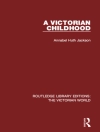Examines land management programs pushed by the colonial government in western Kenya between 1920 and 1963, analyzing how those programs were negotiated or contested by the local community.
Drawing from accounts of colonial experience in western Kenya,
Population, Tradition, and Environmental Control in Colonial Kenya examines the government’s efforts to enforce certain land management programs in relation toits initiatives to revive and co-opt African ’traditions’ in soil conservation and land consolidation programs. Martin Shanguhyia analyzes how these programs were negotiated or contested by the local community; further, he arguesthat their legacy continues to define the everyday experiences of the rural population in Vihiga County, Western Province, notably in terms of high population densities and diminishing returns from the land. Relying on a rich collection of archival sources as well as oral interviews, the book explores the intersection between government policies, demography, and community traditions within a rapidly declining natural environment and adds significantly to our understanding of Africa’s environmental history.
Martin Shanguhyia is assistant professor of history at Syracuse University.
Inhoudsopgave
List of Illustrations
Preface
Abbreviations
Introduction
Administrative and Demographic Changes: Implications on Land Relations, 1900-1930
Maize and Economic Prosperity, 1920-38
Internationalizing Degradation Narratives in Kenya, 1930-38
Prewar Soil Conservation Initiatives and Local Responses, 1934-38
Wartime Production in a Besieged Environment, 1939-45
Postwar Development and the Dilemma of ‘Reviving’ African Traditions, 1945-63
Regional Migration and Failed Agricultural Intensification, 1940-66
Conclusion
Notes
Bibliography
Index












